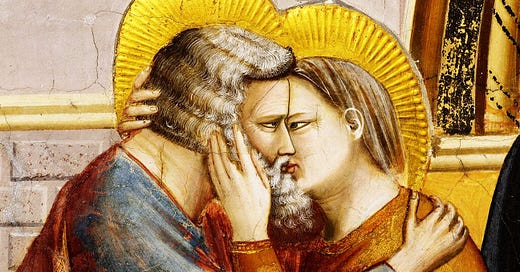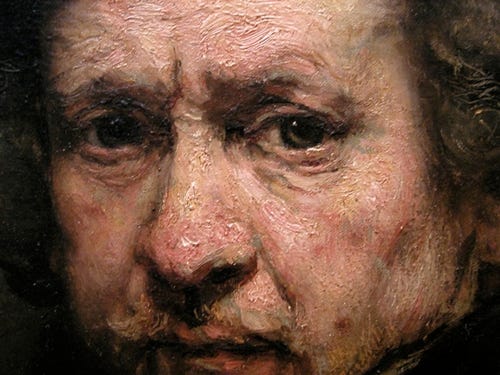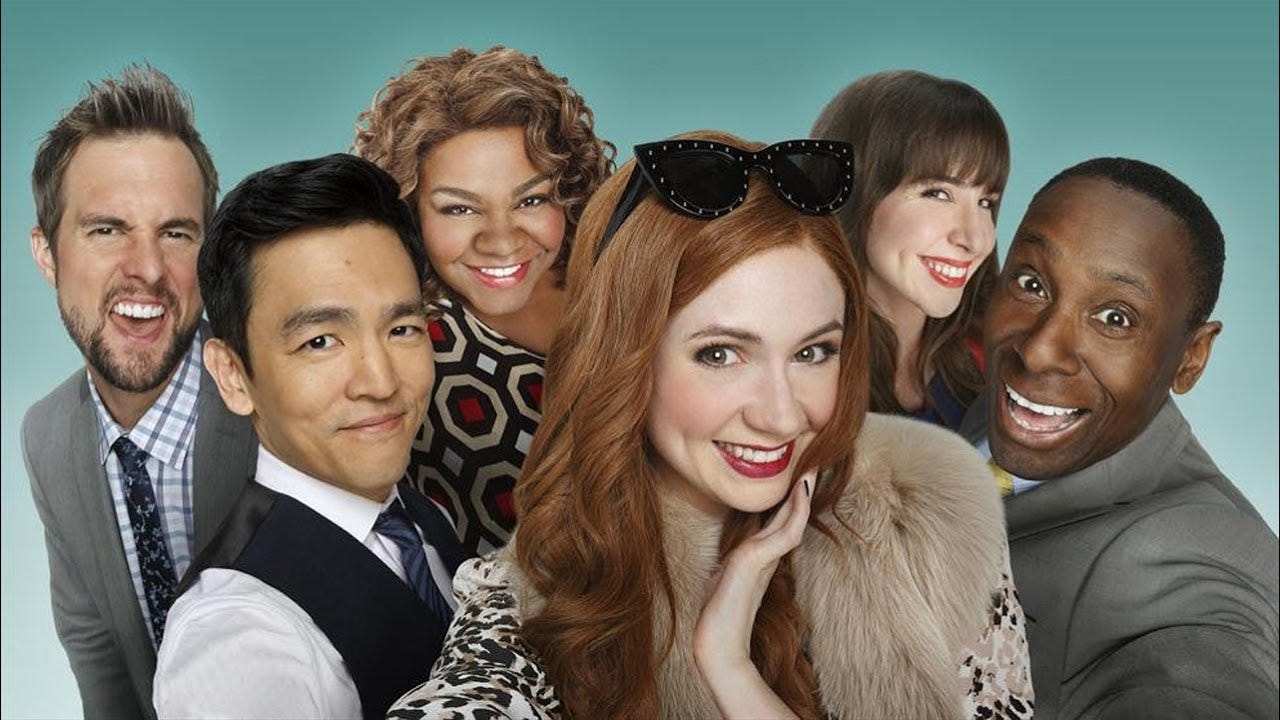We live in a strange time
The modern world, in many ways is poorly suited to the life of human beings. Even with the abundance of technology and every consumer product a person could desire, we find ourselves angry, embittered, and isolated. When asked what it means to be a human being, we get political abstractions instead of expressions of art and wonder.
The difference between the modern world and the premodern is more than the difference between magic and modern science. It is the difference in the perception of what human beings are and who we are. Who are we?
In my last post, I wrote of the transition from the Transcendent Spiritual Materiality of the late Middle Ages to the Immanent Materialism of the Enlightenment that brought us the age of science and industry. Over the past half-century, we have entered a new era, the age of Immanent Non-Materiality. Philosophers and cultural critics call this time Postmodern. The term speaks to the transition to a world of simulation. There is an abandonment of material reality because it provides a context that cannot simply be simulated. The natural order of the world that we know as material reality is the context in which we live. Even if we deny its existence.
The irony is not only as Solzhenitsyn declared that “men have forgotten God,” but we have forgotten ourselves. Who we are, as human persons, has become lost. The dignity and potential of each individual life, once a core belief of Western society, is now being replaced by a utilitarian belief in human value.
The modern world has progressed (?) to the point where each human being is not an end in themselves but, rather, a means to an end beyond their individual purpose.
If you lack utility as a person, for whatever reason, you are no longer necessary for the future of society. You are a non-person without value and unnecessary for the continued existence of society.
Giotto’s Late Medieval Realism (14th century)
“Giorgio Vasari described Giotto as making a decisive break with the prevalent Byzantine style and as initiating "the great art of painting as we know it today, introducing the technique of drawing accurately from life, which had been neglected for more than two hundred years”.”
This portrait of a couple’s kiss is part of a larger work. Its intimacy is in the gaze of each person, the touch of the hands, and the naturalness of their embrace. Here we have from almost a thousand years ago, a picture of love that could still be true today.
Rembrandt’s Renaissance Self-Portrait (17th century)
Self-portrait - Rembrandt van Rijn
Rembrandt captured the universal weariness of human life long-lived. His paintings captured the pathos of life.
His painting of the Return of the Prodigal Son tells the story of a parable of Jesus where the son who had rejected his Father, claiming his inheritance, only to waste it all on debaucherous living, returns to find his father waiting for him with welcoming arms.
Rembrandt’s greatness extends through time as his themes represent the universal character of humanity.
Vincent Van Gogh’s Post-Impressionist Self-Portrait (Early 20th century)
Self-portrait - Vincent Van Gogh
A tormented man who sold one painting during his lifetime came to be a symbol of true humanity. In a well-loved episode of Dr. Who, a professor in the Van Vogh Gallery of the Musee D’orsay says, not knowing that Van Vogh is nearby,
“… to me, Van Gogh is the finest painter of them all. Certainly the most popular great painter of all time, the most beloved. His command of color, the most magnificent. He transformed the pain of his tormented life into ecstatic beauty. Pain is easy to portray, but to use your passion and pain to portray the ecstasy and joy and magnificence of our world, no one has ever done it before. Perhaps no one ever will again. To my mind, that strange, wild man, who roamed the fields of Provence, was not only the world’s greatest artist, but also one of the greatest men who every lived.”
Now here is that moment.
Van Gogh’s life presents us a way to see our lives. We live in obscurity. Trying hard to be a good person and make a difference in the world. No one notices. Even surrounded by family and friends, we feel isolated and alone. Yet, the impact is there. We need our own Doctor Who and Amy’s to show us the value of our lives. Possibly, the way is for us to be them for others.
Andy Warhol’s Modernist Marilyn Monroe (Late 20th century)
Marilyn Diptych - Andy Warhol
The art of Andy Warhol came to be known as Pop Art. Art that is not about the person but of the symbolism of celebrity. Marilyn Monroe, a woman also with her own demons, is a symbol of the modern world. This is the art of the Spectacle of the Real. It does not value persons in their own right but as an expression of a commercial simulation.
Social Media Selfie (Second Decade 21st century)
Selfie - TV series
Of course, today, the selfie has replaced the portrait. What insight shall we draw from their smiling faces? The selfie is the curtain of the simulated world. Instead of pain or world-weariness, we see preening.
A Mirror of Brokenness
Years ago, I had an office in a house in downtown Asheville. The other six people in the building were psychotherapists. Each of them practiced a different kind of psychotherapy. Monthly, we would gather for lunch and talk about our cases. Over the ten years that I was there, I learned a lot about the psychological state of the modern human being. The principal takeaway from these lunches is that organizations are individuals writ large. In other words, the psychological brokenness of people has its counterpart in the brokenness of organizations.
The farther we go into the postmodern age, the greater the brokenness of organizations mirrors the brokenness of people. As I have described the transition of Transcendent Spiritual Materiality to Immanent Materialism, and now to Immanent Non-Materiality, the logical outcome is the loss of dignity, self-respect, and awareness of one’s potential for impact.
The Face of Humanity
Wherever you are right now, take a moment and find a mirror. Look at yourself. What do you see? I’m serious about this exercise.
When you look at your reflection in the mirror, you see a person who has unlimited potential to make a difference in the world.
Impact is the fulfillment of your potential impact. If you can see this truth, and admit to yourself that you are broken and needy, then, you can realize that you have unlimited potential for impact. Now, you have taken a step toward understanding how the transitions that I mention above have impacted our world.
Your potential to make a difference that matters is a product of your existence as a person. Yet, our problem is that the social and organizational structure of the world is not interested in your potential. All sorts of obstacles are in the way of your fulfillment as a human being. This modern day culture is only interested in your utility as a part of the mechanism of the world.
If you can look yourself in the eye and see your potential, then you can learn to be an agent of the talent that is yours. As you do so, you test yourself against the hardness of the world. You learn to see what your capabilities are. As you do, you learn to see your potential. This is what self-awareness is. Out of this comes the motivation to create beauty and goodness in the midst of pain and brokenness.
The Man in the Mirror
Back in the ancient days of the 1980s, pop star Michael Jackson produced a song called The Man in the Mirror. I thought then, as I do today that it was a message that our world needs yet is unwilling to accept.
I'm gonna make a change
For once in my life
It's gonna feel real good
Gonna make a difference
Gonna make it right
As I, turn up the collar on
My favorite winter coat
This wind is blowin' my mind
I see the kids in the street
With not enough to eat
Who am I, to be blind pretending not to see their needs?
A summer's disregard
A broken bottle top
And a one man's soul
They follow each other on the wind ya know
'Cause they got nowhere to go
That's why I want you to know
I'm starting with the man in the mirror
I'm asking him to change his ways
And no message could've been any clearer
If they wanna make the world a better place
Take a look at yourself and then make a change
I've been a victim of a selfish kind of love
It's time that I realize
That there are some with no home
Not a nickel to loan
Could it be really me pretending that they're not alone?
A willow deeply scarred
Somebody's broken heart
And a washed out dream (washed out dream)
They follow the pattern of the wind, ya see
'Cause they got no place to be
That's why I'm starting with me
I'm starting with the man in the mirror (oh)
I'm asking him to change his ways (oh)
And no message could've been any clearer
If you wanna make the world a better place
Take a look at yourself and then make a change
I'm starting with the man in the mirror (oh)
I'm asking him to change his ways (oh)
And no message could've been any clearer
If you wanna make the world a better place
Take a look at yourself and then make that
Change
I'm starting with the man in the mirror (oh yeah)
I'm asking him to change his ways (better change)
No message could've been any clearer
(If you wanna make the world a better place)
(Take a look at yourself and then make the change)
(You gotta get it right, while you got the time)
('Cause when you close your heart) you can't
(Then you close your) close your, your mind
With the man in the mirror, oh yeah
I'm asking him to change his ways (better change)
No message could've been any clearer
If you wanna make the world a better place
Take a look at yourself and then make a change
(Oh yeah) gonna feel real good now
I'm gonna make a change
It's gonna feel real good
Come on (change)
Just lift yourself
You know
You've got to stop it
Yourself (yeah)
(Make that change)
I've got to make that change today
(Man in the mirror) you got to
You got to not let yourself brother
(Yeah) you know
(Make that change) I've got to get that man, that man
You've got to
You've got to move
Come on
Come on
You got to
Stand up, stand up (yeah, make that change)
Stand up
Stand up and lift
Yourself, now
(Man in the mirror)
(Yeah, make that change)
Gonna make that change come on
(Man in the mirror)
You know it
You know it
You know it
You know
Change
Make that changeWritten by: Ballard Glenn, Garrett Siedah
Album: Bad
Released: 1987
This is a hard song to hear because it means that we cannot sit in judgment and blame others. We must accept responsibility for the state of the world. We are the people in the mirror.
If we can accept responsibility, then it is possible that we may find within ourselves the capacity to create art and wonder in the world. Maybe you are a Giotto or a Rembrandt or a Van Gogh for this time.
If so, it will demand that we find a way to synthesize the Transcendent with the Immanent, the Spiritual with the Material, and the Material with the Non-Material.










What a wonderful thing to do, juxtaposing the Art and finishing with the Man in the Mirror lyrics.
Thank you.